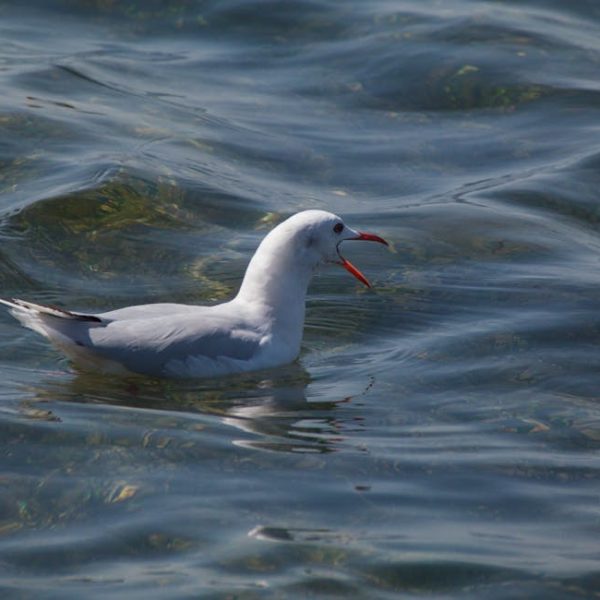When Jack Frost begins to nip at your nose and the snow starts to fall, have you ever stopped and wondered, where do birds go in winter? The short answer is they migrate to warmer territories or adapt to survive the harsh winter conditions. Let’s unfurl the sophisticated matrix of avian winter survival, and follow the feathered trail of migratory birds through the lens of science and seasons.
Migratory Patterns of Birds During Winter
Bird migration, one of the delightful miracles of nature, is essentially a survival tactic. Birds, like the Arctic Tern or Swallow, travel thousands of miles from colder regions to warmer parts of the Earth when winter sets in. This journey tends to follow a set path and pattern as they instinctively travel along certain flyways that span continents and oceans. Migration paths typically lead to areas rich in food and devoid of predators.
Here are a few of the common migratory bird species:
- Swallows
- Hummingbirds
- Sandhill Cranes
- Arctic Terns
Fascinatingly, these migratory routes are embedded within the birds from an early age, indicating an intriguing mix of genetic coding and learned behavior. Some birds even undertake nocturnal migrations, using the cover of darkness to evade predation and optimally use the quiet and stable atmospheric conditions for efficient flying.
Types of Birds That Stay Stationary During Winter
While a broad canvas of bird species embarks on a seasonal exodus, not all winged creatures take flight when winter arrives. Several bird species, including Cardinals, Blue Jays, and Chickadees, are known as ‘residents’ because they remain in the same location throughout the year, even braving the winter chill.
Why don’t these birds migrate? The answer lies within the delicate balance of energy needed for migration versus survival in a cold environment. If food supplies are abundant and shelter is accessible, some birds stick around rather than endure the arduous journey.
While resident birds have the winter advantage of reduced competition for resources and early access to the best nesting sites in spring, there are challenges they must face, such as finding food in the snowy landscape and surviving freezing temperatures. As a result, resident birds have evolved hardiness and resourcefulness to outsmart the cold.
Let’s look at two sides of the winter survival coin for birds who stay put:
- Pros: Reduced competition, early spring nesting choice, no energy expenditure on migration
- Cons: Harsh weather conditions, food scarcity, increased predation risk
Adaptations That Help Birds Survive Winter
Birds exhibit awe-inspiring adaptations to brave the roaring snowstorms and sub-zero temperatures when winter tightens its icy grip. From physiological changes such as growing extra feathers for more insulation to behavioral adjustments like communal roosting for shared warmth, birds find brilliant ways to endure the cold. Some birds even enter a state of energy conservation known as torpor, which is a form of temporary hibernation to withstand frosty nights.
Here’s a quick checklist of common bird adaptations for winter survival:
- Increasing food intake to build fat reserves
- Altering feathers for better insulation
- Utilizing torpor to conserve energy
- Forming communal roosts for shared warmth
- Mastering foraging techniques to uncover hidden food sources
Some birds, like the Ruffed Grouse, take it one step further, diving into snow to create roosts. This snow tunnel not only provides warmth and protection from predators, but it also shields the bird from harsh winter winds.
How Weather Conditions Influence Bird Migration
Birds possess an in-built meteorological system that detects changes in air pressure and temperature, enabling them to adjust their migratory patterns. A sudden cold snap or a raging snowstorm can considerably impact migratory birds, slowing their journey or forcing them to change their route altogether.
Here are some severe weather conditions that can be harmful to birds during migration:
- Snowstorms
- Blizzards
- Hurricanes
- Excessive rain
Interestingly, birds can sense the onset of bad weather even before it arrives. They adjust their departure time or alter their migration path to avoid these severe conditions, showcasing a remarkable level of weather prediction prowess that leaves humans, despite their advanced technology, in awe.
Let’s compare the weather prediction abilities of different bird species in the table below:
| Bird Species | Weather Prediction Ability |
|---|---|
| Swallows | Can sense changes in air pressure and adjust their migration accordingly. |
| Sandhill Cranes | Often delay migration until after a major storm has passed. |
| Hummingbirds | Avoid traveling during high winds, rain, or low temperatures. |
| Arctic Terns | Can travel extra miles to circumvent bad weather. |
Human Impact on Bird Winter Survival And Migration
Human activity, both intentional and inadvertent, can pose significant challenges for birds during their winter journeys. Deforestation, urbanization, pollution, and climate change can compromise bird habitats, disrupt migratory routes, and impact food availability, posing substantial threats to bird winter survival. Simultaneously, some human activities, such as bird feeding and providing shelter, can benefit bird species.
Here are some human activities that negatively impact birds:
- Deforestation and habitat destruction
- Pollution and toxic spills
- Unregulated hunting and poaching
- Climate change
Despite these unfavorable impacts, humans can play a positive role in supporting bird survival. Maintaining bird feeders, building bird boxes, and planting native plants that bear winter fruits can make backyards a safe haven for birds during winter. Moreover, participating in citizen science projects like bird rescues, bird count surveys, and migratory tracking can help provide vital data for bird conservation efforts.
Here’s a checklist of ways to create a bird-friendly environment in your own home this winter:
- Install and maintain bird feeders.
- Provide shelter with bird boxes or trees.
- Plant native trees or shrubs that provide winter berries.
- Avoid unnecessary pruning in winters to keep natural bird shelters intact.
- Participate in local bird-oriented citizen science programs.
Winter, though challenging for birds, offers a stage to showcase their extraordinary adaptations and survival instincts. With a little understanding and some good deeds, we can celebrate and support these avian wonders and their diverse strategies for weathering winter’s icy grip.
Key Takeaway:
- Birds use migration or winter adaptations as key survival strategies during the cold season.
- Migratory birds like swallows and Arctic Terns travel thousands of miles along set flyways to warmer territories.
- Resident birds such as Cardinals and Blue Jays choose to stay put, managing to survive in cold environments due to their resourcefulness and adaptations.
- Birds demonstrate unique physiological and behavioral winter adaptations including, growing extra feathers, increasing food intake, or entering energy conservation state called torpor.
- Birds can sense weather changes, helping them adjust their departure time or migratory path.
- Human activities can negatively impact birds during winter by disrupting habitats and food availability. However, positive activities like maintaining bird feeders and participating in bird conservation efforts can aid their survival.
Despite the challenging weather conditions winter brings, birds navigate the season with extraordinary adaptability and resilience. We have the privilege of witnessing their survival strategies and supporting them in small but impactful ways. Whether it’s making our backyards bird-friendly or taking part in local bird conservation efforts, each step counts towards helping these fascinating creatures survive winter.
FAQs
Q: What other behaviours do birds exhibit to survive during winter?
A: Apart from migrating or staying put, birds might also change their diet to include more fat-rich food, fluff up their feathers to trap warm air, or group together to share body warmth, among other behaviours.
Q: How do birds know when and where to migrate?
A: Scientists believe that birds rely on a combination of innate instincts, changes in daylight, and weather patterns to cue their migrations. Some might also use landmarks or the Earth’s magnetic field for orientation during their journey.
Q: How can I tell if a bird is a resident or a migrant in my area?
A: Your local wildlife or conservation agency, birdwatching groups, or online resources could provide information on which birds in your area are residents and which are migrants.
Q: Why don’t all birds just migrate to avoid winter hardships?
A: While migration helps many birds survive winter, the journey itself can be dangerous and energy-intensive. Thus, if a bird can find enough food and shelter to survive the winter, it might choose to stay put.
Q: Can global warming affect bird migration?
A: Yes, global warming can change the timing and pattern of bird migration by altering the availability of food and suitable habitats.
We hope you found this article enlightening! For more insights on the fascinating world of birds and other wildlife, feel free to explore more posts on our website and share this article with others.












